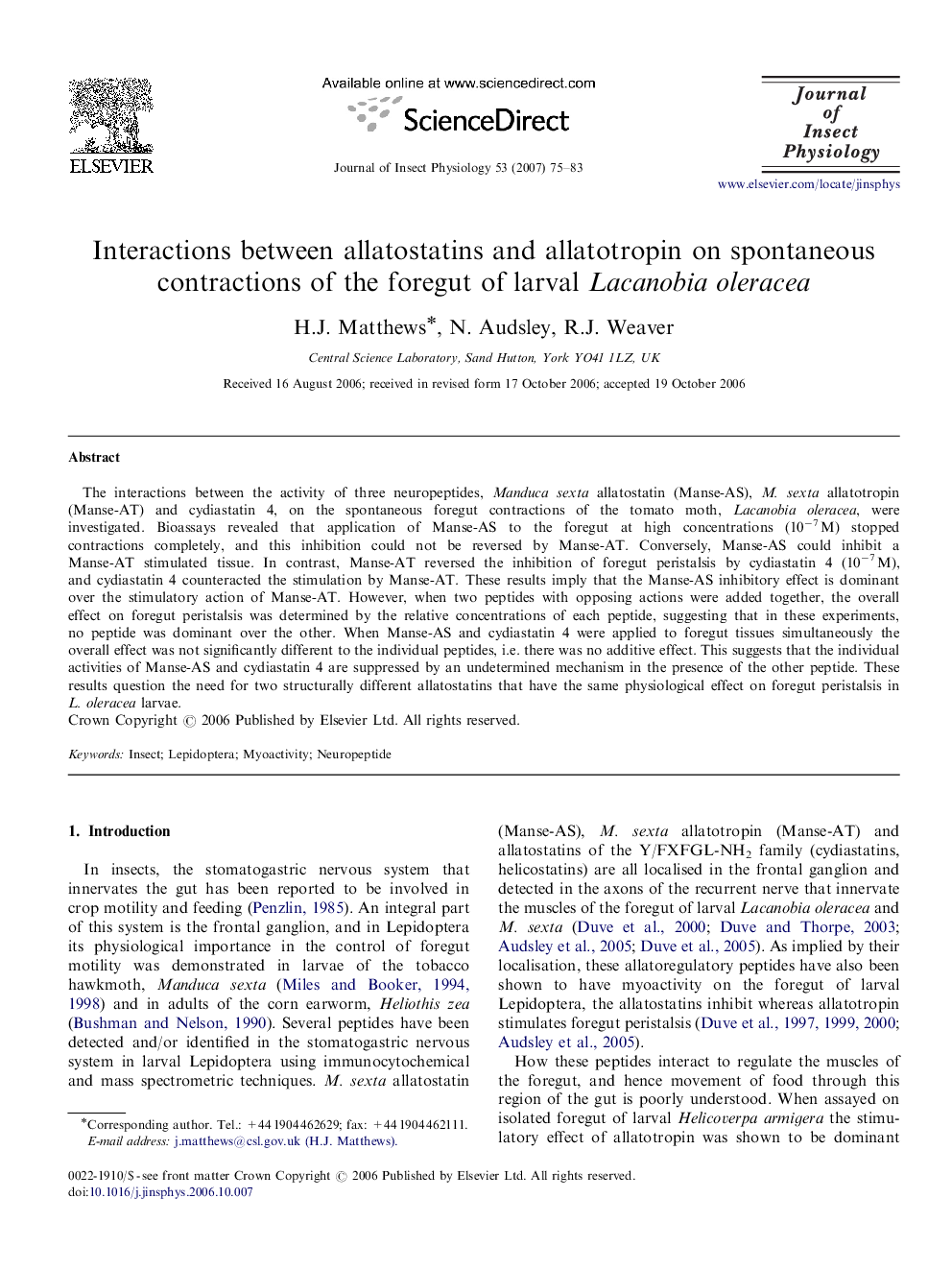| Article ID | Journal | Published Year | Pages | File Type |
|---|---|---|---|---|
| 2841552 | Journal of Insect Physiology | 2007 | 9 Pages |
The interactions between the activity of three neuropeptides, Manduca sexta allatostatin (Manse-AS), M. sexta allatotropin (Manse-AT) and cydiastatin 4, on the spontaneous foregut contractions of the tomato moth, Lacanobia oleracea, were investigated. Bioassays revealed that application of Manse-AS to the foregut at high concentrations (10−7 M) stopped contractions completely, and this inhibition could not be reversed by Manse-AT. Conversely, Manse-AS could inhibit a Manse-AT stimulated tissue. In contrast, Manse-AT reversed the inhibition of foregut peristalsis by cydiastatin 4 (10−7 M), and cydiastatin 4 counteracted the stimulation by Manse-AT. These results imply that the Manse-AS inhibitory effect is dominant over the stimulatory action of Manse-AT. However, when two peptides with opposing actions were added together, the overall effect on foregut peristalsis was determined by the relative concentrations of each peptide, suggesting that in these experiments, no peptide was dominant over the other. When Manse-AS and cydiastatin 4 were applied to foregut tissues simultaneously the overall effect was not significantly different to the individual peptides, i.e. there was no additive effect. This suggests that the individual activities of Manse-AS and cydiastatin 4 are suppressed by an undetermined mechanism in the presence of the other peptide. These results question the need for two structurally different allatostatins that have the same physiological effect on foregut peristalsis in L. oleracea larvae.
